Last updated on December 29, 2023

Archetype of Finality | Illustration by Chris Rahn
Magic has an abundance of decks that have been developed over its 30-year history. These decks use a wide range of cards and win conditions to bring an end to the game. This diversity is a large part of Magic's appeal.
But, as diverse as the card options may be, there are often underlying ideas and themes that bind decks together across decades and formats. These underlying tenants are the archetypes of decks. Understanding deck archetypes is vital to improving as a player; it helps you play better and aids in deck building so you can brew decks, not just piles of cards.
Let's talk about that!

Good Mythical Morning
What Is an Archetype in Magic?

Archetype of Imagination | Illustration by Robbie Trevino
“Archetypes” in Magic refer to the strategy and game plan of a decklist. The difference between deck lists isn’t just the cards they play, but why they play them. A control deck plays Lightning Bolt primarily for removal, while an aggro deck uses it to end the game.
Archetypes are one of the most fundamental parts of the game. The first questions you should ask yourself when you’re building a deck or trying to understand that brew that Top 8’d your local PTQ is “what’s the archetype? How do you plan to win?”
To start, I tend to view Magic archetypes as sitting on a spectrum defined by aggro and control on either end. The four archetypes I'm about to cover are the foundations of deckbuilding. I'll also take a look at what happens when they intermingle, or when other strategies get introduced.
Aggro

Monastery Swiftspear | Illustration by Gabor Szikszai
Creatures (16)
Goblin Blast-Runner x4
Goblin Bushwhacker x4
Monastery Swiftspear x4
Voldaren Epicure x4
Instants (6)
Lightning Bolt x4
Fireblast x2
Sorceries (12)
Chain Lightning x4
Kuldotha Rebirth x4
Reckless Impulse x4
Artifacts (8)
Experimental Synthesizer x4
Implement of Combustion x4
Lands (18)
Great Furnace x4
Mountain x14
Sideboard (15)
End the Festivities x4
Flaring Pain x2
Relic of Progenitus x4
Searing Blaze
Smash to Smithereens x4
At one end of our spectrum are aggro decks. These decks look to end the game ASAP with a critical mass of cheap creatures to rush down your opponent. Aggro decks tend to go all in on winning within the first turns of the game and don’t have much removal or many grindy cards to help an extended game; win or lose, aggro matches tend to be decided early.
Aggro decks are full of cheap creatures and spells and have a low land count that facilitates playing spells as quickly as possible, ensuring they have the critical mass of damage needed to take an opponent out. A great example of an aggro deck is Pauper Kuldotha red.
This list brought LucasG1ggs to a Top 8 finish in a recent Magic Online Pauper Challenge and is the epitome of an aggressive deck. It’s running a scant 18 lands, and almost all the cards cost one mana. It’s also incredibly focused. These are either creatures that hit hard or burn spells that go face.
The only exceptions are the artifacts, which provide an invaluable source of card advantage to help hit that critical mass of spells we keep talking about. But even those artifacts add pressure. They’re essential to making Kuldotha Rebirth work, and they add creatures or extra damage after the initial burst of card draw.
Aggro decks are often mono-colored. One benefit from this is sheer consistency. If all your spells are red, you can chuck 20 Mountains into a deck and never worry about faltering on mana. The establishing turns are super important, so a Boros () aggro deck that finds itself staring at a bunch of Plains and Goblin Guides will lose pretty quickly.
Aggro decks are fantastic for new players looking to get into more competitive formats. They’ve been a staple for a while. The straightforward strategy is easy to understand but also forces new players to consider multiple questions.
Do you Lightning Bolt the opponent’s blocker, or save it for their face? Is this the best way to sequence your spells for maximum damage? It’s also good for grinders looking to climb the MTG Arena ladder by playing as many games as possible.
Control
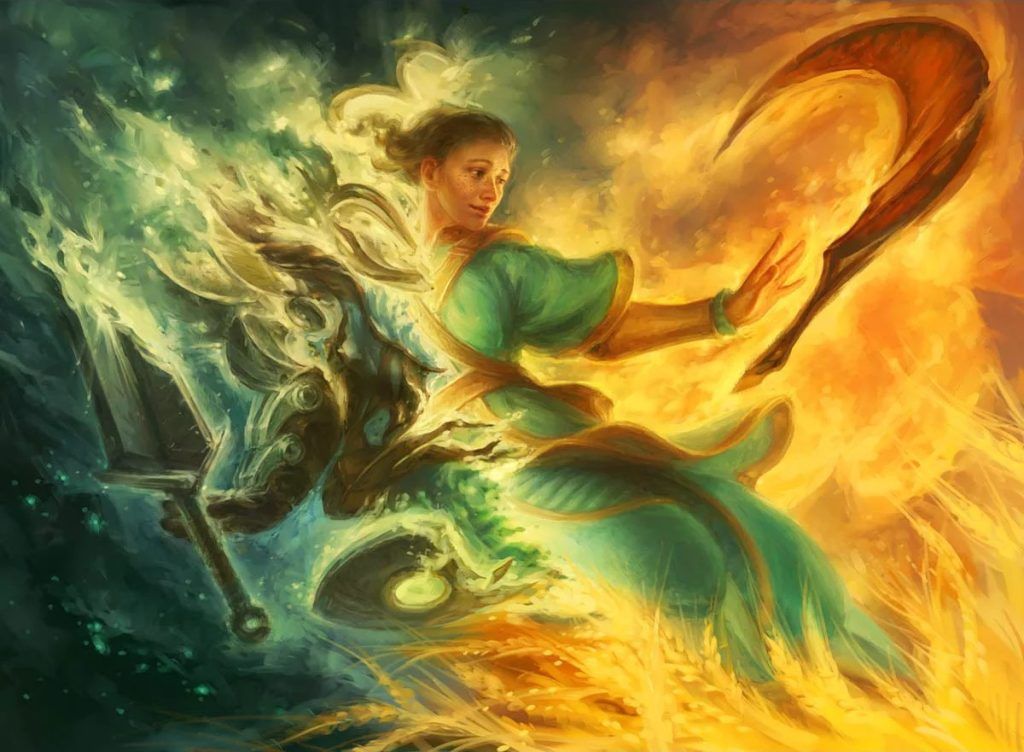
Lay Down Arms | Illustration by Liiga Smilshkalne
Planeswalkers (7)
Teferi, Hero of Dominaria x3
The Wandering Emperor x4
Instants (13)
Absorb x4
Dovin's Veto x3
Fateful Absence
March of Otherworldly Light x2
Memory Deluge x3
Sorceries (6)
Lay Down Arms x4
Supreme Verdict x2
Enchantments (5)
Shark Typhoon x3
Temporary Lockdown x2
Lands (27)
Castle Ardenvale
Castle Vantress
Eiganjo, Seat of the Empire
Field of Ruin x3
Hall of Storm Giants x2
Hallowed Fountain x4
Irrigated Farmland x4
Island x2
Otawara, Soaring City
Plains x4
Prairie Stream x4
Sideboard (15)
Aether Gust
Dovin's Veto
Dream Trawler
Hallowed Moonlight x2
Hullbreaker Horror
Mystical Dispute x2
Narset's Reversal
Narset, Parter of Veils
Rest in Peace x3
Supreme Verdict
Test of Talents
Control dominates the other end of the spectrum. Control decks are about as far from aggro as you can get. These decks use a bunch of cheap interaction to extend the game as long as possible so they can win at their leisure.
Card advantage is also important to a strong control strategy. You need to see more cards than your opponents so that you can bury them beneath all your removal. Control decks are often multicolor decks that use blue for access to card advantage like Glimmer of Genuis, and countermagic like Essence Scatter and Disallow.
The secondary color usually gives access to removal that blue lacks. A popular pairing in Pioneer right now is white. This Azorius () control list Top 4’d a recent Pioneer Preliminary event on Magic Online and uses white to access interaction like Lay Down Arms and Supreme Verdict as well as finishers like Teferi, Hero of Dominaria and The Wandering Emperor.
It's also a great example of how slowly a control deck can win the game. Once you’ve taken control with your wraths and counterspells and such, you can win at your own pace by chipping away with tokens from The Wandering Emperor and Castle Ardenvale. You can even win by putting Teferi, Hero of Dominaria back into your library with its -3 ability to force your opponent to mill out.
Control decks thrive in metas with access to plentiful interaction to disrupt their opponents. This archetype is great for players who enjoy long games and want to outthink their opponents. It’s also a good fit for players with a deep knowledge of all the decks in their format so they can pinpoint and exploit those decks’ weaknesses.
Midrange
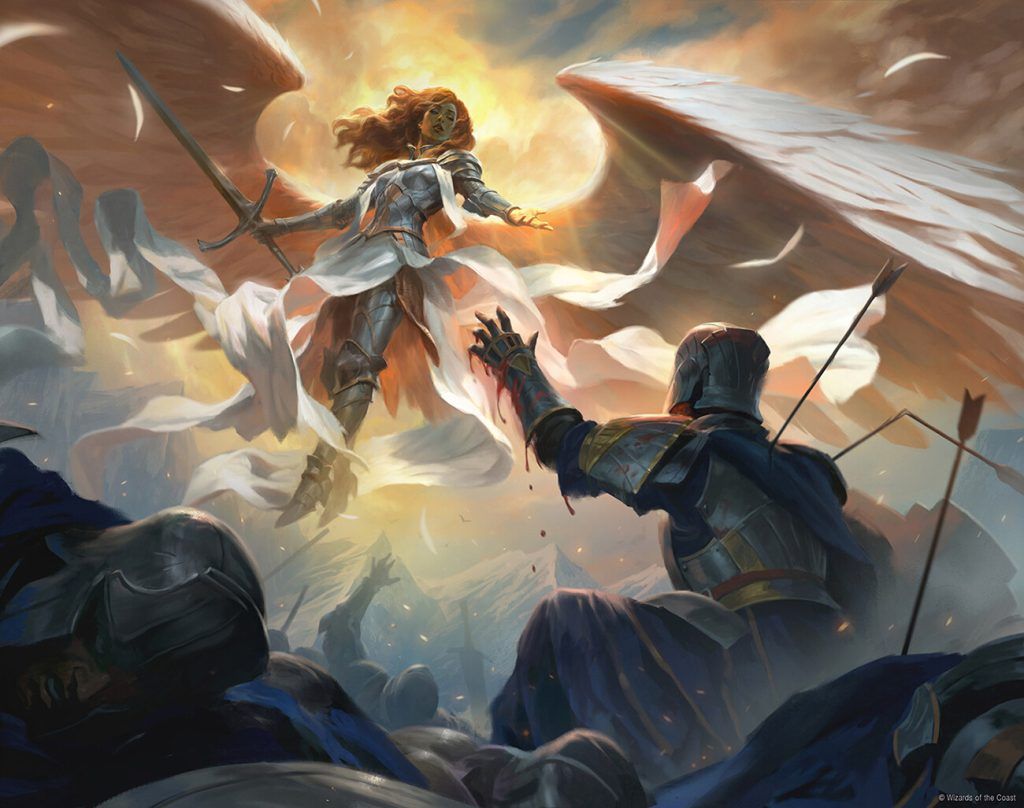
Serra Paragon | Illustration by Heonhwa Choe
Planeswalkers (8)
Elspeth Resplendent x2
The Eternal Wanderer x3
The Wandering Emperor x3
Creatures (9)
Ambitious Farmhand x3
Loran of the Third Path x2
Sanctuary Warden x2
Serra Paragon x2
Sorceries (5)
Enchantments (10)
Ossification x4
The Restoration of Eiganjo x2
Wedding Announcement x4
Artifacts (4)
Lands (24)
Eiganjo, Seat of the Empire
Mirrex x2
Plains x17
Roadside Reliquary x4
Sideboard (15)
Depopulate x3
Farewell x2
Fateful Absence x3
Phyrexian Vindicator x3
Sunset Revelry x2
The Stone Brain x2
Midrange sits in the middle of our spectrum between control and aggro, borrowing a few pieces from each. There will often be plenty of cheap interaction just like you’d see in a control deck, paired with efficient threats that one could see in an aggro deck. It often walks the line between the two, looking to out-aggro the control decks and win quickly, but slowing down against aggro decks and grinding them out in a longer game.
There’s a great deal of diversity in how midrange decks work and the cards they play because it sits between the other major archetypes. They can lean towards either end of the aggro-control spectrum. For example, Abzan () Greasefang is a Pioneer midrange deck with explosive power. It can easily out-aggro an opponent by dropping a Parhelion II on turn 3, but can also play out a longer game where it out-grinds an opponent by just casting the vehicles it wants to reanimate.
Compare that to a mono-white midrange list in Standard, and you can see the difference. This deck has lots in common with the Azorius control list we just looked at. There’s plenty of cheap interaction and planeswalkers for a long, grindy game, but it does a much better job than the control lists of playing to the board and asserting itself in the early turns. This is a great example of a midrange deck that leans towards the more controlling end of things.
Midrange decks are fantastic for players looking for a challenge. I’ve always found them to be the hardest decks to pilot as they ask you to be the control player and the aggro player depending on the matchup, and it even shifts multiple times over the course of a game. It requires adaptability and a solid understanding of not just your turn, but also the next turns of your and your opponent’s gameplay. Because midrange decks tread the space between aggro and control they have a jack-of-all-trades-master-of-none vibe that’s challenging and rewarding when you play it perfectly.
Combo

Atraxa, Grand Unifier | Illustration by Marta Nael
Creatures (12)
Serra's Emissary
Archon of Cruelty x3
Atraxa, Grand Unifier
Grief x4
Griselbrand x3
Instants (8)
Dark Ritual x4
Entomb x4
Sorceries (18)
Exhume x4
Faithless Looting x4
Reaniamte x4
Thoughtseize x2
Unmask x4
Enchantments (4)
Animate Dead x4
Artifacts (4)
Lotus Petal x4
Lands (14)
Badlands x2
Bloodstained Mire x2
Marsh Flats x2
Polluted Delta x2
Scrubland
Swamp x2
Underground Sea
Verdant Catacombs x2
Sideboard (15)
Dauthi Voidwalker x4
Faerie Macabre x3
Show and Tell x4
Thoughtseize
Wear / Tear x3
If we look at our previous archetypes as points on a line representing our spectrum, aggro and control are on opposite ends, with midrange being a point in the middle. The point representing combo decks would be off the line because this is a whole other card game. We’re entering the realm of unfair decks.
The other decks we’ve looked at are, by and large, fair. They follow the quintessential rules of Magic: they deploy creatures and spells to take their opponents to zero, just with different plans of how they want to get there. They play Magic as Richard Garfield intended. Combo wins out of left field, using other strategies that use cards in interesting ways to skirt the intentions of the creator.
Take this Legacy reanimator deck. It wins with Griselbrand and Atraxa, Grand Unifier, but it’s certainly not paying for them honestly. The deck drops them in the graveyard and uses spells like Animate Dead and Reanimate to get them back. It has some disruptive elements in Thoughtseize and Unmask to help get the combo off, but the whole deck is basically an engine with one purpose: reanimate.
You’ll often find combo decks with a strong engine feel like this. There aren’t a lot of cards on the list for value or to help in various matchups. It’s all geared towards doing “the thing” as quickly as possible. Any situational tech is in the sideboard to respond to your opponent’s sideboarding; for example, cards in the reanimator sideboard like Show and Tell and Wear // Tear are great against opposing decks trying to use cards like Leyline of the Void to disrupt your graveyard.
Combo decks are unconventional and use strategies far off the beaten path. These decks are great for players who want to puzzle out the best route to victory. Playing combo decks well is about understanding the lines you take to get from zero to Griselbrand and executing them around whatever disruptive elements your opponents might be playing. This is the perfect archetype for anybody who looks at their hand and sees how they want to win.
Combo-Control
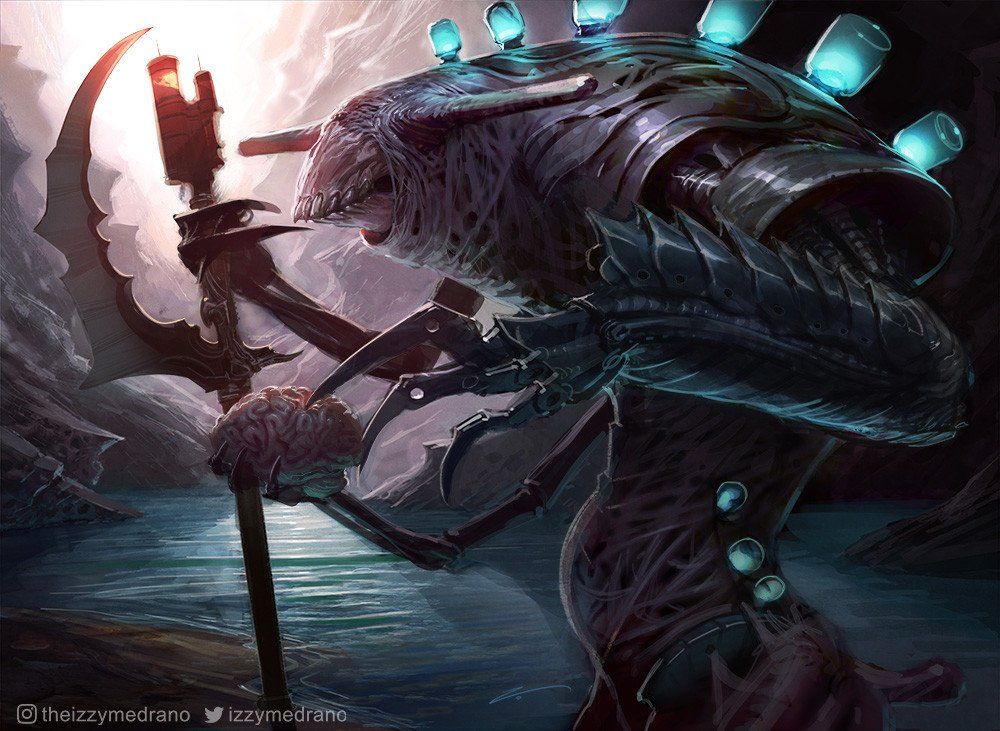
Deceiver Exarch | Illustration by Izzy
Creatures (15)
Deceiver Exarch x4
Kiki-Jiki, Mirror Breaker
Pestermite x2
Snapcaster Mage x4
Spellskite x2
Vendilion Clique x2
Instants (9)
Cryptic Command
Dispel
Electrolyze
Lightning Bolt x4
Twisted Image
Peek
Sorceries (5)
Enchantments (4)
Lands (23)
Cascade Bluffs
Desolate Lighthouse
Island x5
Misty Rainforest x4
Mountain
Scalding Tarn x4
Steam Vents x3
Stomping Ground
Sulfur Falls x2
Tectonic Edge
Sideboard (15)
Ancient Grudge x2
Anger of the Gods x2
Batterskull
Blood Moon x2
Combust
Echoing Truth
Keranos, God of Storms x2
Relic of Progenitus
Swan Song x2
Threads of Disloyalty
Combo-control is what happens when fair meets unfair. These decks combine the elements of a control deck with a combo finisher. These often aren’t built around engine combos the way combo decks like reanimator or storm are, but works off two-card combos that close the game after using cheap interaction to maneuver themselves into a position to combo off with ease.
The best-known example of combo control is the Splinter Twin deck. Its primary win condition was the two-card infinite of Splinter Twin with Deceiver Exarch or Pestermite to end the game as soon as turn 4.
Rather than being geared to churn out the combo as soon as possible, this deck is surrounded by a suite of cards that wouldn’t look out of place in a control deck. There’s cheap removal like Lightning Bolt and Flame Slash, and counterspells like Dispel and Remand. Splinter Twin plays out a controlling game plan before using the combo as a finisher.
The inclusion of control elements gives the deck more strength in a longer game than a traditional combo might have, while the combo gives the control shell an explosive finish, making it harder for an opponent to top deck out of a losing situation. Combo-control decks are great for players who enjoy the controlling strategy but don’t want to spend their evenings tucking Teferi 50 times or for players who like the idea of combo decks but don’t care for the all-or-nothing playstyle that engines can result in.
Aggro-Control/Tempo

Unholy Heat | Illustration by Kari Christensen
Creatures (14)
Brazen Borrower x2
Delver of Secrets x4
Dragon's Rage Channeler x4
Murktide Regent x4
Instants (17)
Brainstorm x4
Daze x4
Force of Will x4
Lightning Bolt x4
Unholy Heat
Sorceries (7)
Chain Lightning
Ponder x4
Preordain x2
Artifacts (4)
Lands (18)
Island
Misty Rainforest x4
Scalding Tarn x4
Steam Vents
Volcanic Island x4
Wasteland x4
Sideboard (15)
End the Festivities x2
Force of Negation x2
Grafdigger's Cage
Meltdown x2
Minor Misstep x2
Pyroblast x3
Surgical Extraction x3
Aggro-control decks, also called tempo decks, borrow from control’s love of cheap interaction but pair it with more efficient creatures rather than a combo finisher. Tempo decks don’t pop up often since they need a specific blend of interaction and creatures to really work.
The prime example of tempo is Legacy’s perennial Izzet () delver deck. We can see the control influence with cards like Lightning Bolt and Force of Will, and we’ve got some of the best aggressive creatures ever printed, like Dragon's Rage Channeler and Delver of Secrets.
Tempo uses cards and effects that grant a temporary advantage, usually on the board in exchange for cards in hand. Delver deploys several of these cards. Daze is a great example of a tempo card; it puts you down a land but lets you counter your opponent’s spell for free. This exchange creates a temporary advantage; you’ve knocked your opponent off-kilter by countering their spell, and you’re looking to use that advantage to close the game with a flipped Delver or something similar. You’re putting yourself at a mana disadvantage with Daze but hoping to win the game before the mana discrepancy catches up to you.
Aggro-control decks depend on a combination of cheap, instant-speed interaction and threats that can get played around those spells. The typical weakness of a creature deck with a bunch of countermagic is that it conflicts with your mana. If you cast a creature spell on your turn, you can’t hold up mana for your counters. But if you hold up countermagic, you can’t meaningfully impact the board.
Flash creatures can get around this. This made the Standard rogues deck so potent back in Zendikar Rising Standard. They could hold up interaction like Drown in the Loch and threats like Soaring Thought-Thief and deploy whatever was most appropriate. You also have decks, like delver, that get around this restriction by playing free countermagic and tapping out on their turn.
Aggro-control decks are my favorite to play. They’re similar to midrange in that they constantly keep you on your toes and ask you to rapidly switch between being the control player and the aggro player. This is a great option for players who like playing tricky decks that reward careful sequencing and quick thinking.
Ramp
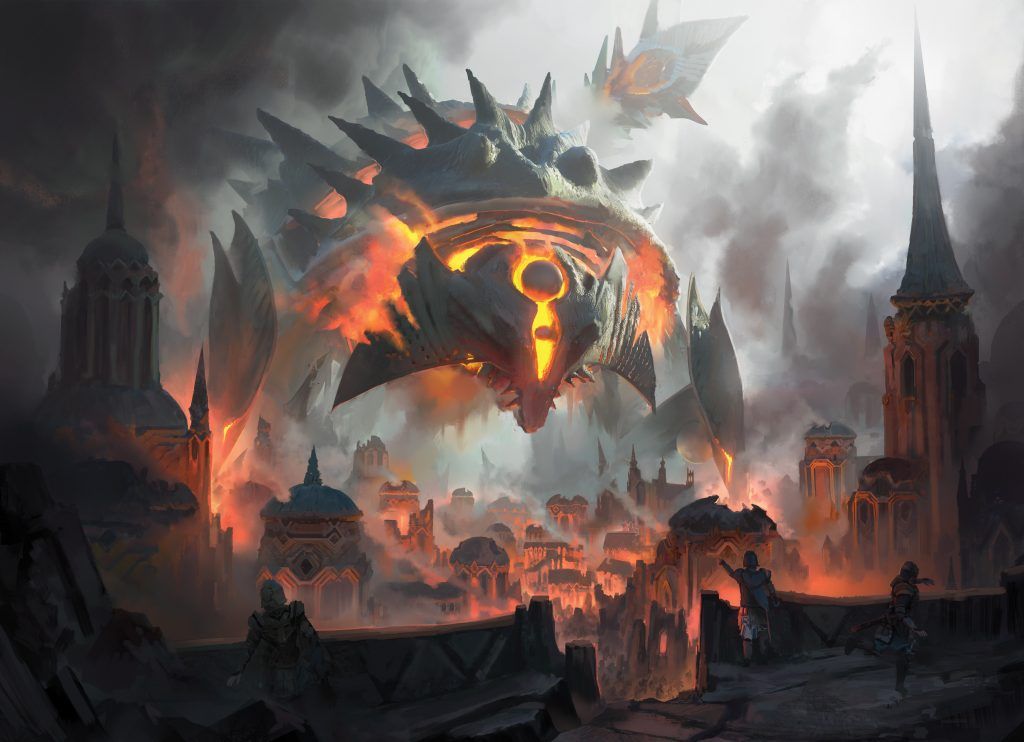
Cityscape Leveler | Illustration by Leon Tukker
Planeswalkers (6)
Karn Liberated x2
Karn, the Great Creator x4
Creatures (9)
Cityscape Leveler x3
Ulamog, the Ceaseless Hunger x2
Wurmcoil Engine x4
Instants (3)
Dismember x3
Sorceries (8)
Sylvan Scrying x4
Ancient Stirrings x4
Artifacts (15)
Oblivion Stone x3
Expedition Map x4
Chromatic Star x4
Chromatic Sphere x4
Lands (19)
Boseiju, Who Endures x2
Forest x4
Sanctum of Ugin
Urza's Mine x4
Urza's Power Plant x4
Urza's Tower x4
Sideboard (15)
Bottle Gnomes
Chalice of the Void
Cityscape Leveler
Engineered Explosives
Ensnaring Bridge
Force of Vigor x2
Grafdigger's Cage
Haywire Mite
Pithing Needle
Tormod's Crypt
Trinisphere
Walking Ballista
Warping Wail x2
Ramp decks are focused on using cards that ramp, or put you ahead on mana, to churn out massive threats well ahead of schedule. These are distinct from decks that use ramp spells to help gain an advantage. For example, a lot of variants of The Rock have cards like Birds of Paradise or Llanowar Elves to gain an early mana advantage, but those decks can also happily function without those ramp pieces.
A true ramp deck depends on those cards to play the game. Their entire strategy is to drop big creatures into play sooner than possible to take over the game. They’re typically composed of two parts: ramp spells and payoffs.
The most important thing to consider with a ramp deck is your ramp curve. Most ramp spells jump you ahead by a single mana, and you want to maximize the extra mana every turn possible. For example, a deck with an odd ramp curve would start with a ramp spell on turn 1 like Llanowar Elves, which gives you three mana on turn 2, which goes into a 3-mana ramp spell like Cultivate. That jumps you to five mana on turn 3, the perfect amount to drop a threat like Nissa, Who Shakes the World.
Not all ramp decks focus on land. A lot work off other forms of fast mana. Legacy has a great example in dragon stompy that uses cards like Chrome Mox and Simian Spirit Guide to accelerate out disruptive cards like Blood Moon and Chalice of the Void and lock your opponents out of the game. Another deck that turbos out threats is Urza Tron in Modern which uses the Urza lands to drop cards like Karn Liberated on turn 3.
The most important thing with ramp decks is to understand when you’re online. You’re basically giving up early turns to get your mana advantage, so you want to use that as soon as possible. If all your Tron threats cost nine mana then you can’t use them until turn 4, after you’ve spent the first two turns spinning your wheels to get your mana base online.
Ramp decks are another great option for newer players thanks to their straightforward gameplan. They’re also great for players who love jamming giant spells and overwhelming their opponents with value.
Archetypes in Limited
A lot of these archetypes are present in Limited, but they’ll look very different. The only major archetype that’s not present in the vast majority of Limited formats is combo. It doesn’t come together unless the format specifically seeds in a combo, like how Dominaria United gave Izzet the tools for storm combo.
One of the biggest differences you’ll find in Limited is that decks are much less sleek. It’s just the nature of the format. It’s lowered powered and you don’t have perfect access to the cards you want. This means your Limited aggro deck will never have Kuldotha Red’s sleek mass of 1-drops.
A lot of Limited decks also feel more like midrange decks. Even the aggressive and controlling ones will be closer to the middle of the spectrum because of how unfocused the decks are. We also don’t see too many hybrid archetypes like aggro-control and combo-control, but they can exist. There are several differences you’ll find when drafting these decks as opposed to building them in Constructed.
Control is the deck that changes the most. You’ll almost never hit a critical mass of removal intense enough to avoid playing creatures; everybody prioritizes removal super highly. You’ll need early defensive creatures that block well, like Dune Beetle and Senate Courier, so you don’t get beaten down by an aggressive deck. You’ll still want removal and card draw, as well as more expensive finishers. Control is much harder to pull off in Limited without these elements.
An aggro deck in Limited will function similarly to its Constructed counterpart. You want a low curve of creatures to beat down early, backed by a stouter threat or two. You could find yourself running combat tricks like Giant Growth both to help win combats and push through some extra damage in lieu of burn spells. 2-drops are especially important in aggro decks. Don’t be afraid to play a less exciting option or two to make sure you’re consistently adding to the board in the early turns.
As noted, most Limited decks will fall under the midrange umbrella. You’ll look for the basic tenants of that archetype: efficient creatures and removal, maybe a bit of card draw to help find your bomb or out-grind your opponents. Most Limited decks have that midrange back-and-forth between playing aggressively and playing slower.
Ramp decks can also exist in Limited. These are usually contingent on the format being a bit slower and having some form of ramp spell, often an enchantment that lets lands tap for more mana or an artifact that taps for mana. These usually sit around three mana. These decks don’t just use their ramp to get a mana advantage, but as color fixing for splashing. They’re often referred to as 5-color green, using green as a central color for mana fixing and most of their spells while splashing bombs and removal from other colors.
How Do Archetypes Differ by Format?
The biggest difference between formats is how quickly archetypes need to win based on the tools available. They can’t be too far behind their formats curve, or else they can’t exist.
A great example of how this can differ would be the Legacy reanimator deck versus Pioneer Lotus Field. These are combo decks with an engine but function at vastly different speeds. As I noted, reanimator can do the deed as early as turn 1. In contrast, Lotus Field can’t win before turn 4. It’s all literally legal in Legacy, but not nearly fast enough to be effective.
Aggro decks will similarly change based on how quickly they can win. Standard mono-red has some good tools, but it’s nothing compared to Modern burn with access to Goblin Guide and tons of 1-mana spells that deal three damage. But the core idea of the deck remains the same; kill the opponent as quickly as possible with the most efficient creatures and burn spells in their respective format.
The card pool of a format also impacts what decks are available. For example, there aren’t really any decent combo or aggro-control decks in Standard at the moment. March of the Machine could shake that up, but right now it’s a strong balance of aggro and midrange decks, with some control sprinkled in. Metas also have a big impact on which archetypes are viable. Some archetypes might be weaker in a format, but as the meta-chosen decks shift, they can become much better.
The tools available to an archetype will change more between formats than the ideas of the deck. Combo decks are a bit of an exception to this rule because they’re often hyper-specific, but most of the decks on our spectrum play out similarly. This is part of why it’s so important to understand the basic deck archetypes. You can take what you learned playing Standard mono-red and apply many of the same core practices and heuristics to playing Kuldotha red in Pauper or burn in Modern. It makes you a more flexible, well-rounded player.
Wrap Up
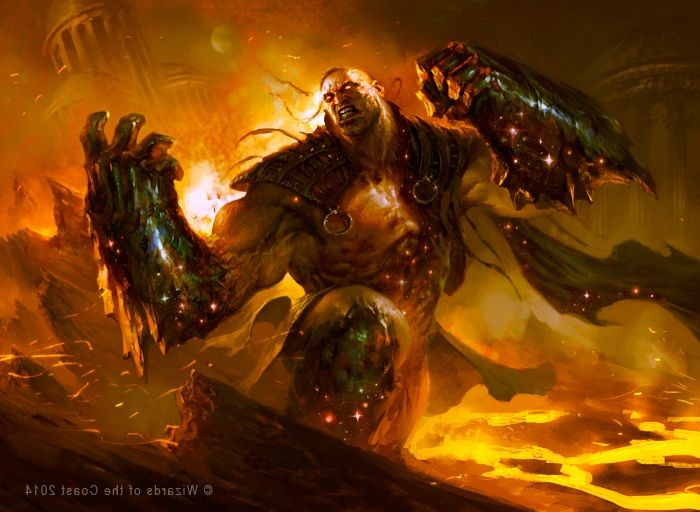
Archetype of Aggression | Illustration by Mathias Kollros
Understanding deck archetypes is essential for deckbuilding and just playing Magic. You’ll have a deeper understanding of how to pilot your decks better and pressure your opponent’s weak points once you understand how archetypes work and why they play the cards they do. It also gives you more room to innovate with your deck.
Knowing what your deck wants to do and following through makes playing the game much easier. It also gives you fundamental skills as a Magic player that are transferable across formats.
What’s your favorite deck archetype? Do you prefer to brew or net deck? Let me know in the comments below, or on Draftsim's official Twitter.
Stay healthy, stay happy, and thanks for reading!
Follow Draftsim for awesome articles and set updates:
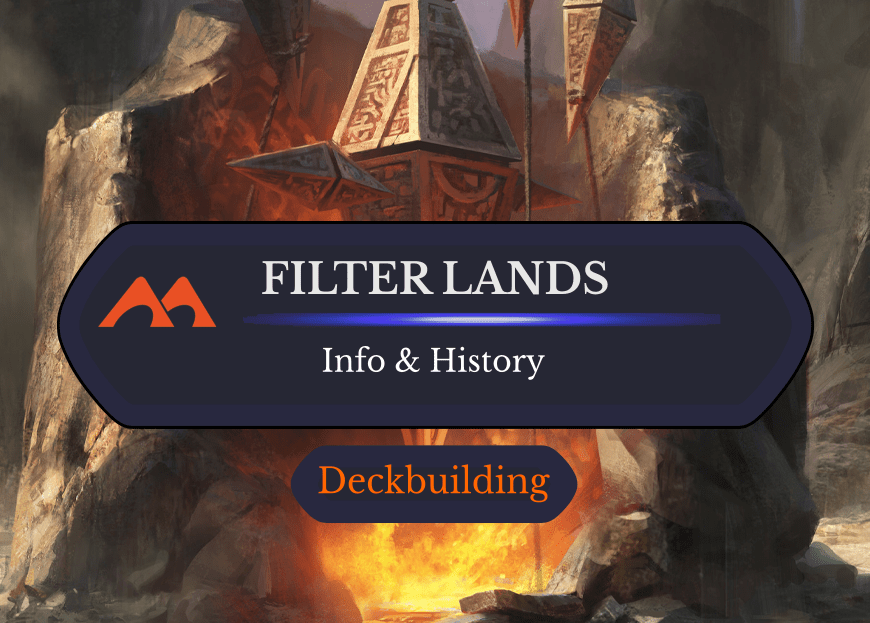
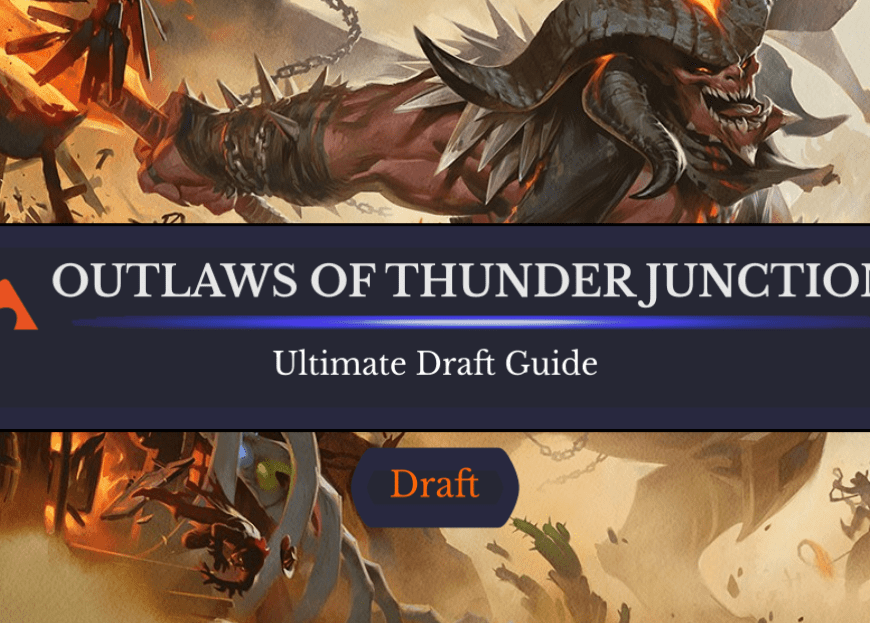
2 Comments
“Tempo is shorthand for “temporary” in reference to cards and effects that grant a temporary advantage, usually on the board in exchange for cards in hand.”
Small feedback. Tempo isn’t shorthand for anything. Tempo is its own word. It’s a musical term and apparently dates back to fencing as well, but it’s the speed or pacing of something. Maintaining tempo is maintaining the pace and the initiative of the game.
Totally right, thanks for the correction! It’s been fixed 🙂
Add Comment